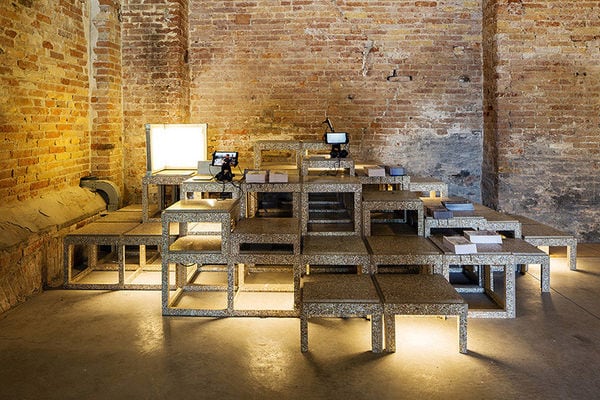
The Chinese Pavilion Questions the Role of Architects in the Country
Jamie Danielle Munro — June 17, 2014 — Art & Design
References: tcathinktank & designboom
The Chinese Pavilion presented at the Venice Biennale challenges the role of the architect and what exactly the role entails. To put it more succinctly as stated on DesignBoom, the exhibition "highlights issues regarding the perception and research of architecture in the country."
The pavilion is set up with chairs stacked in an interesting manner for visitors to view videos and pamphlets that teach about the background of the industry, where it's going and when the career entails. It also questions how the condition of society in the country effects architecture as a whole, which is quite the broad and challenging inquiry.
The Chinese Pavilion was done by the company TCA Think Tank, an organization that was founded in Shanghai in 2011.
Photo Credits: designboom, tcathinktank
The pavilion is set up with chairs stacked in an interesting manner for visitors to view videos and pamphlets that teach about the background of the industry, where it's going and when the career entails. It also questions how the condition of society in the country effects architecture as a whole, which is quite the broad and challenging inquiry.
The Chinese Pavilion was done by the company TCA Think Tank, an organization that was founded in Shanghai in 2011.
Photo Credits: designboom, tcathinktank
Trend Themes
1. Questioning the Role of Architects - The Chinese Pavilion challenges the role of the architect in the industry, presenting innovative opportunities for architects to redefine the needs of society and apply them in their designs.
2. Integration of Societal Issues in Architecture - The pavilion questions how societal issues affect the architecture industry, leading to an increased awareness of the responsibilities of architects in creating sustainable, socially responsible designs.
3. Experiential Installations in Architecture Exhibition - The design of the exhibit itself presents an opportunity for architects to create experiential installations within the context of an architecture exhibition to create a more immersive and interactive experience for visitors.
Industry Implications
1. Architecture - As the pavilion challenges the role of architects and pushes for more socially responsible designs, the architecture industry has an opportunity to evolve and meet the changing needs and expectations of society.
2. Exhibition and Event Planning - The unique design of the Chinese Pavilion exhibit provides an opportunity for event planners to create immersive and interactive experiences within the context of an architecture exhibition.
3. Social Responsibility Consulting - The pavilion's exploration of societal issues in relation to architecture presents an opportunity for social responsibility consulting firms to help bridge the gap between architecture and social responsibility, guiding architects in creating designs that are more sustainable, accessible, and socially responsible.
0.8
Score
Popularity
Activity
Freshness
























